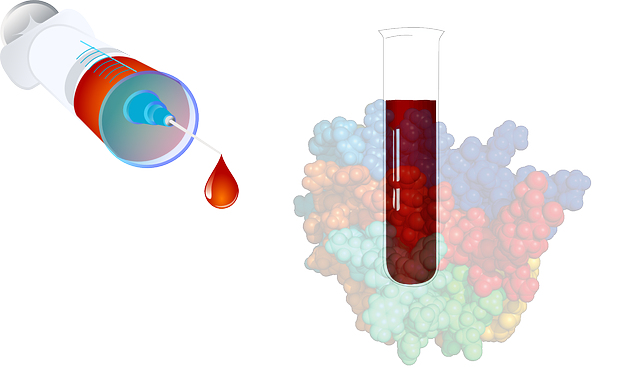A diabetes blood test is a key diagnostic tool for Type 1 and Type 2 diabetes, measuring glucose levels in the bloodstream (70-130 mg/dL). Differences in test results indicate distinct conditions: elevated autoantibodies (GAD, IA-2) suggest Type 1 due to beta cell destruction, while normal or slightly elevated glucose with no significant autoantibodies points to Type 2, characterized by insulin resistance. Accurate diagnosis and personalized management strategies rely on these distinctions; understanding the test process empowers patients through effective blood sugar monitoring, educational resources, and support groups.
Diabetes is a prevalent chronic condition, with Type 1 and Type 2 being its two main forms. A diabetes blood test plays a crucial role in diagnosing these types. This article delves into the understanding of diabetes blood tests, exploring how results differ between Type 1 and Type 2. We guide you through the diagnosis process, offering insights into what to expect before, during, and after the test, ensuring clarity for those navigating this essential health check.
- Understanding Diabetes Blood Tests
- The Difference Between Type 1 and Type 2 Diabetes in Blood Test Results
- What to Expect During and After the Diagnosis Process
Understanding Diabetes Blood Tests
A diabetes blood test is a crucial tool in diagnosing both Type 1 and Type 2 diabetes. This simple yet powerful method involves checking the level of glucose, a type of sugar, in your bloodstream. Glucose is vital for energy production, but in people with diabetes, the body either doesn’t produce enough insulin to regulate it (Type 1) or becomes resistant to insulin’s effects (Type 2). During a diabetes blood test, a healthcare professional will take a small sample of your blood and measure its glucose concentration. Norms typically range from 70 to 130 mg/dL (milligrams per deciliter), but these values can vary based on factors like recent eating or physical activity. If your results fall outside this range, it could indicate diabetes, prompting further evaluation and a tailored management plan.
The Difference Between Type 1 and Type 2 Diabetes in Blood Test Results
Type 1 and Type 2 diabetes can be distinguished from each other based on key differences in blood test results. A crucial indicator is the presence or absence of antibodies, which are proteins produced by your immune system to fight infection. In Type 1 diabetes, autoantibodies target and destroy the insulin-producing beta cells in the pancreas. This leads to a complete lack of insulin production, often reflected in elevated levels of antibodies such as GAD (glutamic acid decarboxylase) and IA-2 (insulin autoantibody). Conversely, Type 2 diabetes is characterized by insulin resistance, where the body becomes less responsive to insulin, leading to higher blood sugar levels. Blood tests for Type 2 diabetes typically show normal or slightly elevated glucose levels, with no significant presence of autoantibodies.
The diabetes blood test results can provide vital clues about the underlying cause and type of the disease. While both types can result in high blood sugar, they differ in their mechanisms and treatment approaches. Understanding these distinctions is essential for accurate diagnosis and tailored management strategies, ensuring personalized care for individuals with either Type 1 or Type 2 diabetes.
What to Expect During and After the Diagnosis Process
When undergoing a diabetes blood test for Type 1 or Type 2 diagnosis, it’s important to understand what to expect. During the test, a healthcare provider will typically draw a small sample of your blood, usually from a vein in your arm. This blood is then analyzed for levels of glucose (sugar), which can indicate how well your body is regulating insulin. The process is relatively quick and often painless, with only minor discomfort associated with the needle prick.
After the test, you’ll receive results that will help your healthcare provider determine if you have diabetes or prediabetes. If diagnosed, regular monitoring of blood sugar levels will likely become part of your routine. This can involve frequent blood tests, especially in the early stages of management, to understand how your body responds to treatment and make any necessary adjustments. Additionally, educational resources and support groups can help you navigate this new chapter and learn how to effectively manage your condition.
A diabetes blood test is a crucial tool for identifying both Type 1 and Type 2 diabetes. By understanding the differences in blood test results and what to expect during the diagnosis process, individuals can navigate this important step with confidence. Whether it’s through regular screening or noticing symptoms, early detection enables effective management and improved quality of life.
